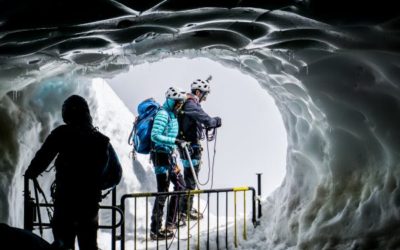FULL SPECTRUM YOUTH MINISTRY? WHAT IS THAT?
We’re going to be talking about it a lot this year. What is “Full Spectrum Youth Ministry” and what does it have to do with outdoor ministry? On a recent trip to Finland, I had the opportunity to come alongside some Finnish youth workers who have a passion for reaching the young people in their communities. I was asked in an interview what the term “Full Spectrum Youth Ministry” meant, because I use it a lot while teaching groups how to develop catalytic and effective youth ministry. I’ve been involved in youth ministry for about 30 years and have been involved in a variety of organizations like, Young Life, Cru, YWAM, Intervarsity, Navigators, as well as lots of church-based student ministries. As I have made observations, learned from many skilled leaders, and worked on a theology of youth ministry, we landed on a term “Full Spectrum Youth Ministry” to describe what others have referred to as relational youth ministry or incarnational youth ministry. When I was living and serving in New Zealand years ago, a friend of mine, Duane Major introduced me to the term “Full Spectrum” as a visual way to describe a biblical theology and practice of disciple-making student ministry. In other words, Full Spectrum Youth Ministry is a way to help leaders understand what Jesus had in mind for developing disciples.
RELATED: My Student Ministry Journey | Vision, Values, Vocation
The term “Full Spectrum” comes from looking at a prism. If you shine light into a prism it spreads out into all the colors of the spectrum. The great commission says go out into all of the world and make disciples (Mark 16:15). As we look at the New Testament, the life of Jesus, and how he make disciples we must ask the question, “What was the full spectrum or full picture that Jesus had in mind for making disciples?”

Photo by Jaco Pretorius on Unsplash
RELATED POST: Sustainable Outdoor Ministry Relies On Good Student Ministry
We use the colors (Green, Orange, Red, and Blue) from the color spectrum to identify four basic aspects of what we call “Full Spectrum” youth ministry. One of the reasons we like using colors is because we do a lot of cross-cultural ministry in over 60 countries and in addition to the importance of keeping our teaching anchored to biblical texts, it is also helpful to use universal analogies like colors. There’s always a language barrier since I speak English and we want translation to be really effective. Colors help leaders actually see the concept. There are four colors that describe what we see in the life of Jesus.
GREEN ZONE GROWS DISCIPLES
The first one is “Green Zone.” Green is symbolic of growth. We show youth leaders that Jesus spent the majority of his time with his 12 disciples. He really prioritized them. They were the one’s who said yes to him, and he gave them most of his attention because they would be the ones to carry the baton of evangelism and disciple-making after he would ascend to Heaven in preparation for his final return at the end of the age. There is no way of knowing the exact percentage of how Jesus spent his time but as I read the New Testament it is easy to guestimate that Jesus probably spend 75% of his strategic time with his 12 disciples if not more. Our local ministries should reflect the same priority.
RELATED POST: Wilderness Experiences Enhance Longevity in Ministry
ORANGE ZONE SHARES THE GOSPEL IN A LANGUAGE PEOPLE UNDERSTAND
Jesus obviously also had a heart for those who were seeking or those who were curious about him. There are many young people like that in our communities. They haven’t made a decision yet to follow Jesus, but they are curious about him. They usually have a relationship with a follower of Jesus who is modeling Christ to them and they have a desire to learn more, so they will be the ones who will show up at a large group or small group meeting where the Gospel is being proclaimed (hopefully in a language that non-Believers can understand!) We use the color orange for “Orange Zone” because orange is symbolic of creativity. It is in the middle of the spectrum so it is a transitional “zone” where people are open and considering the Gospel. Through love, commitment, and effective communication we prayerfully seek to persuade these friends toward considering and believing in the Good News of Jesus. When we communicate the Gospel to young people we need to do it in a language that they understand.
RED ZONE: BUILDING BRIDGES OF RELATIONSHIP WITH NO STRINGS ATTACHED
A third color is red for “Red Zone.” In most cultures red is symbolic of action, challenge, or emergency. When we look at the life of Jesus, he also had a heart for the masses of people who were lost and searching. He cared about people who were wandering and seemed to have no access to God because of their lack of faith or understanding of the Good News of Jesus. He intentionally spent time with them, building bridges of friendship. We want youth workers to understand that they really need to put effort into building friendships with non-Christians in their community. We take the effort to go to them on their turf to find out what makes them tick and what they need. This aspect of youth ministry requires courage, patience, and consistency as it may take a long while for a young person to build trust toward the youth worker and start to transition from the “Red Zone” to the “Orange Zone” of genuine curiosity and willingness to listen to the Gospel message with open ears. That’s actually my story, but that’s a tale for another post.
RELATED POST: Is outdoor ministry more effective for discipleship or evangelism?
UNPLUG, REST, AND BE CHALLENGED IN THE BLUE ZONE
The forth aspect of discipleship that we see in the lifestyle of Jesus is this concept of regular retreat. It’s very obvious when you study the life of Jesus and his patterns for daily life, that he regularly pulled away from the city for rest, prayer, retreat, reflection, and to challenge his disciples. Often he went by himself to be with the Father and other times he retreated with his disciples. He took them up on mountains, out to the beach, or across the sea. Jesus pulled them away to give them perspective, to teach them, or to give them some rest. When you’re in the outdoors, even though there are many challenges, the outcome usually is that young people grow closer to God and they feel connection with him in the outdoor experience. We use the color blue because it is a color of peace or serenity and call it “Blue Zone.”
The term “full spectrum youth ministry” and the colors that we use are symbolic of principles that we see in the New Testament of how Jesus patterned his life of making disciples. In the coming weeks, I will expand on each color and what outdoor leadership has to do with it.
If you would like to listen to my radio interview in Finland regarding Full Spectrum Youth Ministry feel free to click the link below.
TAKE ACTION
- Listen to my interview in Finland
- Keep following my blogs and newsletters in the coming weeks
- To learn more about Red,Orange, and Green Zone, Read the book I revised called, The Personality of Jesus; How to Introduce Young People to Jesus Christ and Help them Grow in their Faith
- To learn more about Blue Zone, read my book, Christian Outdoor Leadership: Theology, Theory, and Practice
- Book a 30 minute video conference with me if you’d like to personally connect regarding Full Spectrum Youth Ministry or outdoor ministry in your church or ministry context



